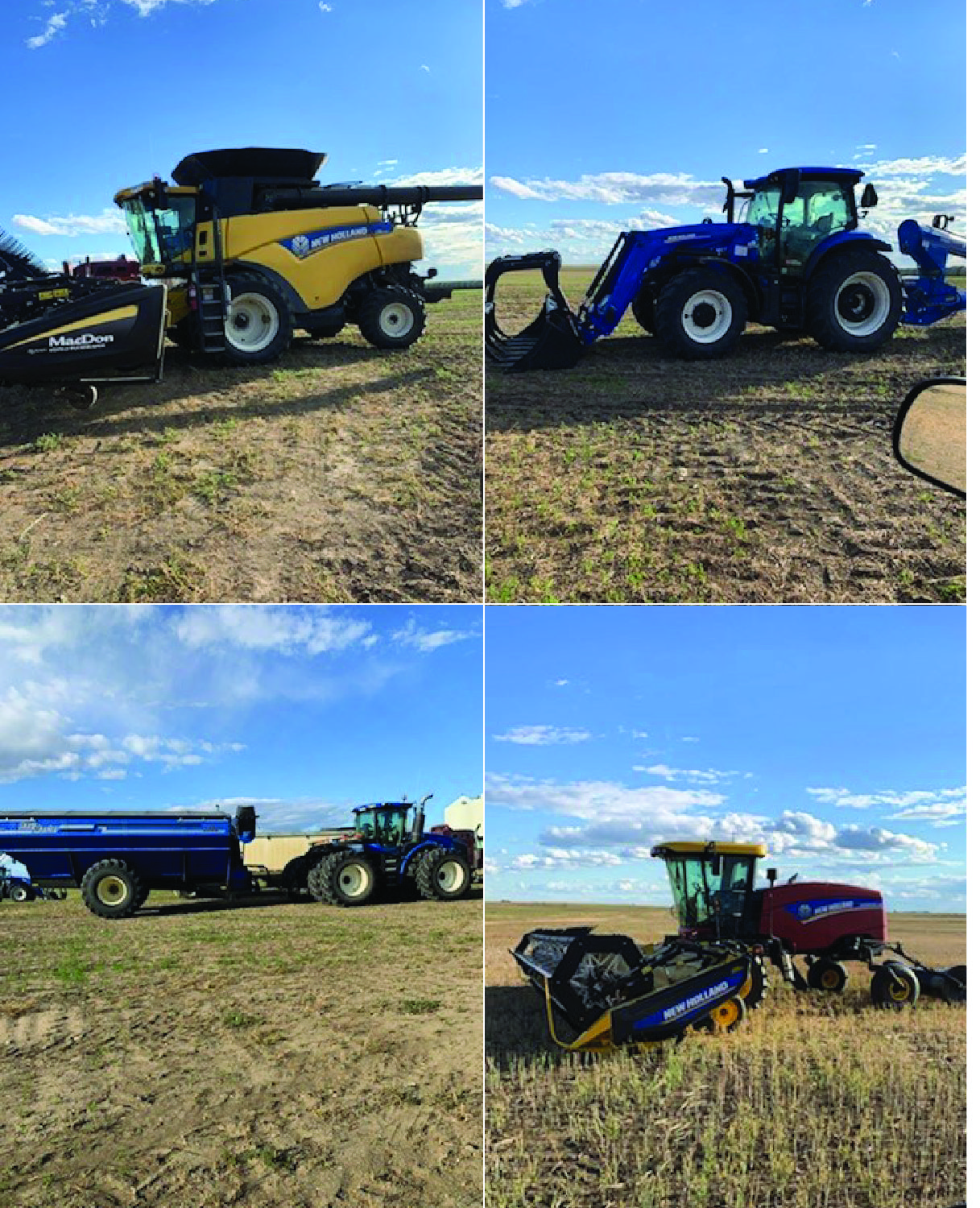Register an account with RME to store your favorite equipment and easily compare between units.
RegisterPalmer Farm Inc., Bladworth, SK
Above Photo: Lenny Palmer, his wife Richelle, and his two children Macy and Mason. (Photo credit: Richelle Palmer)
Farming has its way of keeping producers on their toes, monitoring, and reacting accordingly throughout mother nature’s seasons. For some, this only includes growing crops. For others, this only includes raising cattle. Get yourself a mixed operation of grain and cattle, you’ve got yourself one busy year.
Located near Bladworth, SK, Palmer Farm Inc. has been operating for almost 100 years when Lenny Palmer’s Grandfather first began the operation. Since then, the farm has expanded to include up to 3800 acres of crop land and a section and a half of pastureland for the cattle. To make the year as successful as possible, Lenny has developed a rotation for his crops that he’s found has worked out fairly well so far.
“I’m a third-third, I use a third pulses, a third oil seed, and a third cereals. I typically keep it on a three-year rotation,” he said.
The benefits of having a crop rotation are to prevent disease from spreading amongst the plants. In terms of his canola crops, Lenny likes to keep it at a minimum two years before planting canola on that same plot of land again to prevent a disease called clubroot, which causes premature death in the plants.
“Sometimes it works out really good. There are the odd times you’ll tighten up the rotation, it depends on the year.”
Heading over to the cattle side of his business, Lenny likes to produce a mixed herds of cows whom he breeds to Charolais bulls. Recently, he’s had to downsize on his herd due to the skyrocketing hay prices.
“It’s about $200+ for a bale of hay right now. We’re putting out 6-10 bales a day and that can become pretty pricey. We started producing silage about four years ago and that’ll give them a lot of feed,” said Lenny.
Silage is a process which involves taking barley before it hits the dough stage, cutting it, piling it, and covering it to allow it to ferment. Fermenting encourages all the sugars and the starches to come out, which cows quite enjoy. Not only does this save money, but this also ensures the cattle are getting the necessary proteins to make it through the winter months.
“We usually mix some other feed in it so it’s not too strong but it’s better feeding this way. We base everything off 80-85lbs per cow per day.”
To help him get his daily duties done, Lenny and his crew depend on his fleet of New Holland equipment which include combines, 4WD tractors, a swather, and other smaller tractors that he utilizes for feeding times.
Palmer Farm Inc. has been a New Holland customer even before RME made its way into Outlook, SK and even have the pleasure of working with the same salesman; RME Outlook’s Ag Equipment Sales Consultant Mark Rependa.
“Mark has been with us all along, he’s been at that store since it was Arch Equipment, which was even before John Bob’s time. He’s pretty good, he stops in at our farm quite often, he’ll drop off parts, or he’ll call us to see if we need anything.”
By doing Right by Palmer Farm Inc., RME is able to continue serving Lenny and his farm to ensure he has the equipment that he needs to keep things running. Whether its tractors to feed the cattle or tractors to seed, spray, or harvest the crops, RME is there to ensure the equipment is running optimally.

Photo Caption: Palmer Farm Inc. boasts a number of New Holland unit including combines, 4WD tractors, windrowers, and smaller tractors. (Photo credit: Richelle Palmer)





